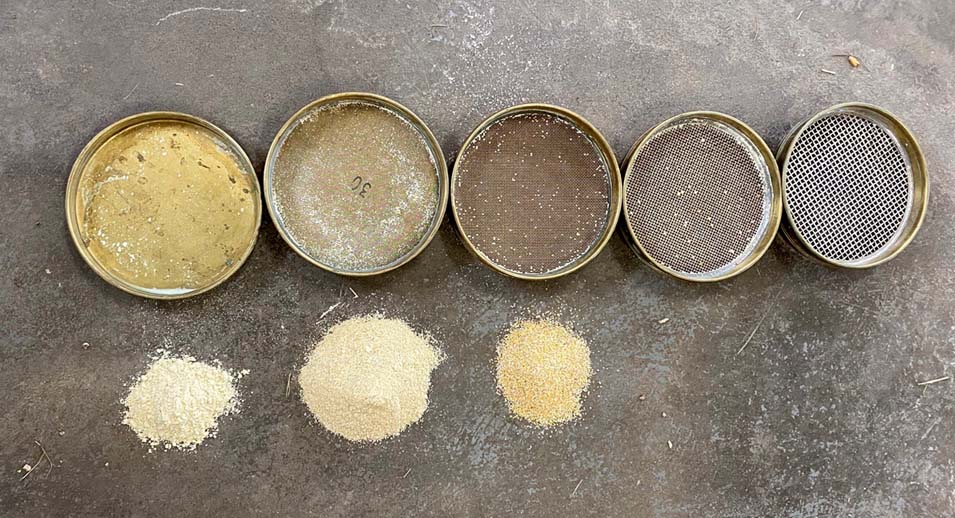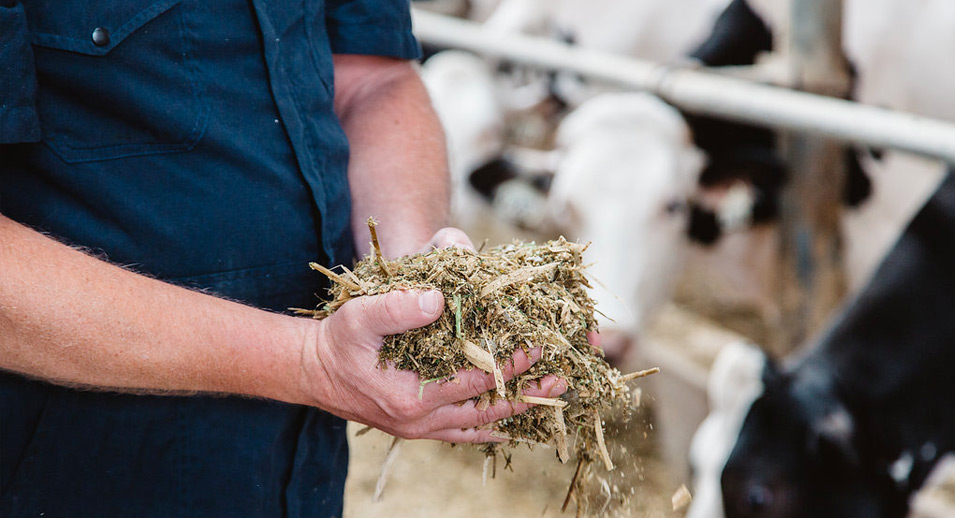Is Your Grain Milling Process Optimized?
- May 11, 2022

Surprising Results
In total, over 50 grain samples were sifted by the two advisors. They were surprised to find that only 30% of the grains were ground fine enough for optimal digestion. Even if all the grains were ground with a hammer mill, the fineness of grinding varied from 199 microns (very fine) to 1038 microns (coarse)! The finer the grain is ground, the more digestible it is, so there is no reason not to grind it as fine as possible.
You can call our advisory service1 if you have questions about the process; we have several solutions for you!
The only limitation is that the feeding system must allow for unrestricted handling. Again, there are solutions for that.
The Mill: A Source of Important Variations!
1. Grain Entry Speed
The faster the grain enters the mill, the coarser the grind will be (without changing the coarseness of the screen). If your grain is too coarse, perhaps you should close the gate a little to slow down the speed of the grain entering the mill.
2. The Screen Size
3. Wear and Tear of the Hammers or the Screen
In 40% of the samples, the hammers were too worn. When the tips of the hammers become too rounded, the grind is coarser. It’s time to replace them. Let’s say the screen you bought was 1/8”, but you end up with 5/32” holes; Maybe it’s time to replace it with a new one. An investment of about $150 will quickly pay for itself.
4. Spillage Through the Door
In about 50% of the samples, spillage between the door of the mill and the screen was observed. Contrary to what one might think, we will not necessarily see rounded grains, but the grinding of our grain will be coarser in this case. It is therefore an important element to evaluate.
What have we learned from our experience?
- Always test the coarseness of your grain.
- If the result is not optimal, open your mill.
- Make any necessary adjustments and test again.
- Monitor milk production, butterfat, manure texture, urea, and de novo milk fatty acid profile levels with PROFILab1 to assess the effects of changes.
- If butterfat seems to be decreasing, you may want to consider reducing the amount of grain fed a bit. When you think about it, if your cows are absorbing grain better, you will need less grain to do the same job! In a time of high feeding costs, isn’t that good news?
Don’t hesitate to ask an advisor for assistance when evaluating your grain, you might be surprised by the result!
1 Available in select provinces as of May 2022.
2 It is possible to successfully make a finely ground grain with a 5/32” screen, but it should be noted that in many cases a screen of 1/8” and smaller is required.











